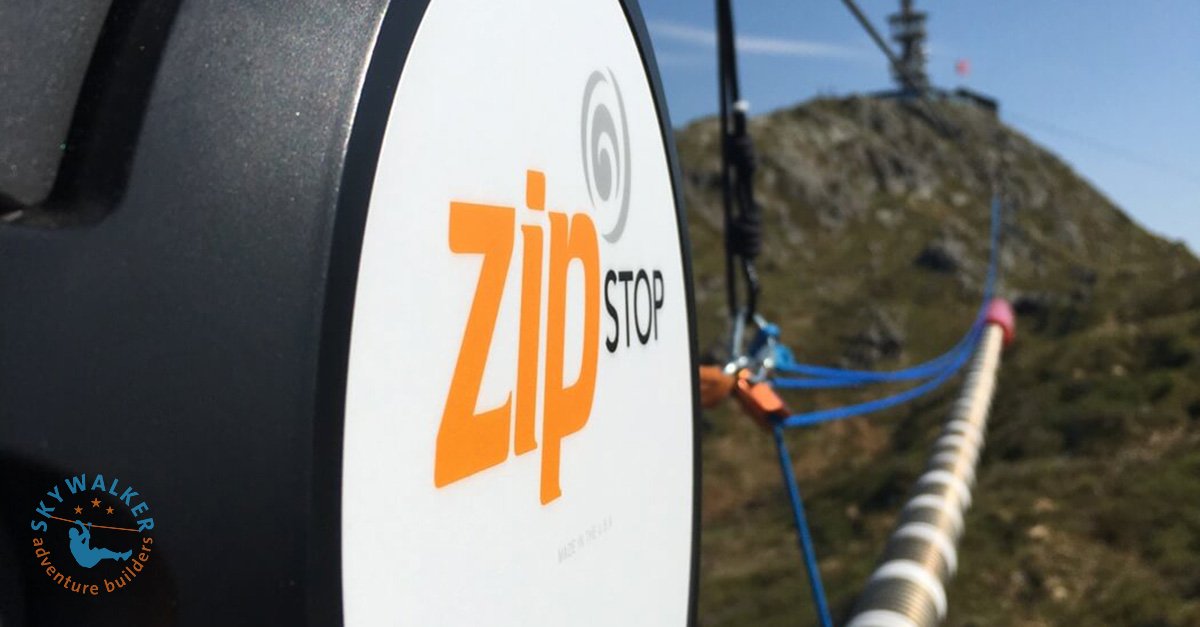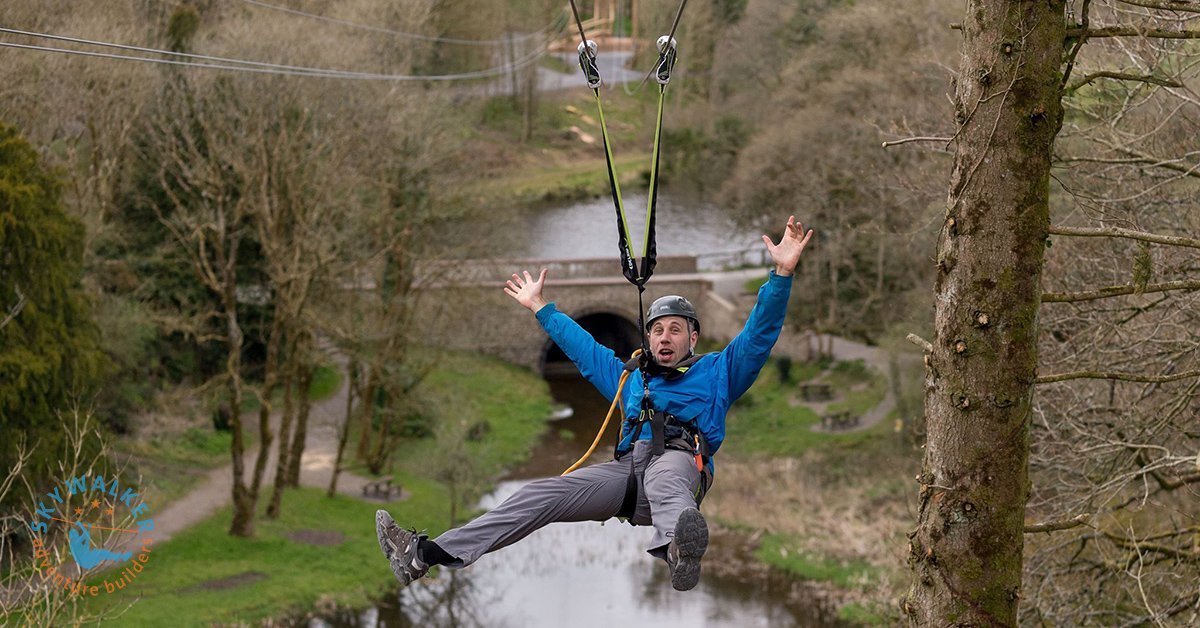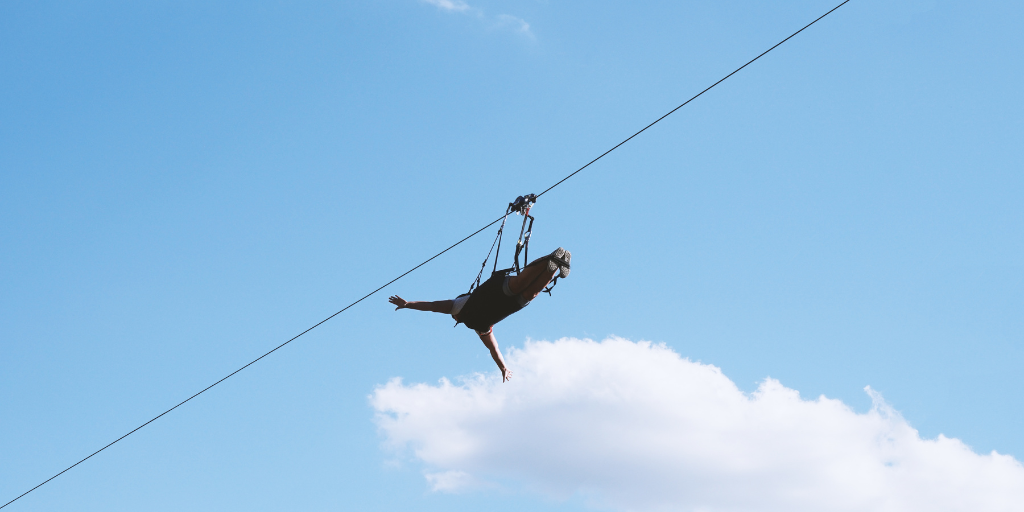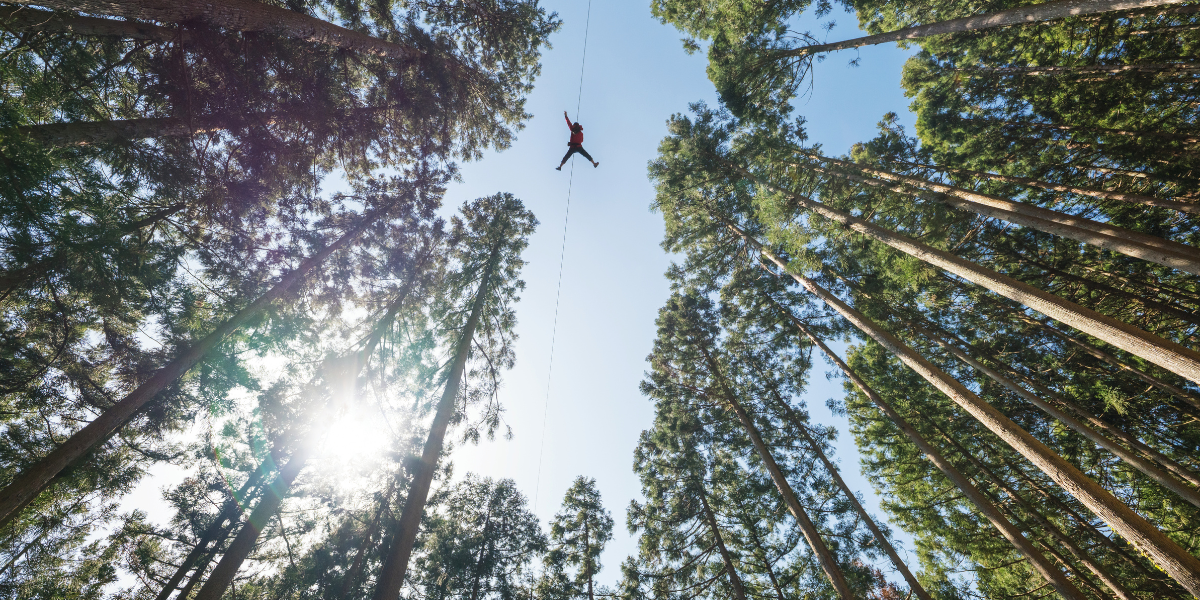Imagine soaring through the air, the wind whipping past your face as you take in stunning views below. That’s the thrill of ziplining. But with such excitement comes the responsibility of ensuring safety. As zipline park operators, it’s not just about delivering thrills—it's about providing a secure experience. Let’s dive into the essential aspects of zipline safety, so every ride is as safe as it is exhilarating.
Anatomy of a Safe Zipline
What turns a zipline from a daring thrill ride into a secure adventure? It's all about the components that ensure a safe experience. From strong cables to advanced braking systems, every part plays a critical role in safety. Think of it as the magic behind the scenes that makes it possible for guests to glide confidently through the sky. Here’s a breakdown of the vital elements.
Zipline Mechanics: The Foundation of Safety
Imagine a zipline like a tightrope—it has to be strong, properly tensioned, and expertly positioned. The mechanics rely on a perfect balance of tension, gravity, and engineering. Just as tuning a guitar string is key to producing the right sound, calibrating a zipline ensures a smooth, safe ride.
Strength in Materials: The Backbone of Zipline Safety
Zipline cables aren’t your average hardware-store wires. They’re crafted from high-grade steel, strong enough to support hundreds of pounds, ensuring they can handle whatever comes their way. These robust cables quietly take on the heavy lifting of thousands of adventures, ensuring every rider's safety.

Safety Standards: The Rules of the Sky
Just like aviation requires strict regulations, zipline operators follow crucial safety standards. These rules aren’t just guidelines—they’re the unseen protectors that ensure ziplining remains safe. From thorough engineering checks to daily inspections, these standards form the foundation of zipline safety.
Engineering Excellence: Building Trust in the Air
Before any rider ever clips in, ziplines go through meticulous engineering evaluations. These assessments test every part, ensuring that platforms, cables, and braking systems are strong enough to withstand not only everyday use but also unexpected challenges like weather changes.
Daily Inspections: The Safety Routine
Similar to pilots’ pre-flight checks, zipline operators carry out daily safety inspections. These checks are crucial to confirm that every piece of equipment is in top condition. Safety is always the priority, from morning until night, ensuring every ride goes smoothly.
The Human Factor: Guardians of Zipline Safety
Behind each zipline adventure is a dedicated team responsible for keeping everything safe. These staff members are more than just employees—they’re the experts ensuring every guest’s safety. From extensive training to maintaining a culture focused on safety, they are the unsung heroes of the ziplining experience.
Training the Team: Creating Safety Experts
Each zipline team member undergoes comprehensive training to become a safety expert. They learn to handle everything from harness fittings to emergency situations. This training transforms them into professionals who can confidently guide guests through a safe and thrilling zipline experience.
Creating a Culture of Safety
Fostering a safety culture is crucial. It’s like cultivating a garden—it needs constant attention and care. In the zipline world, this culture ensures that safety is at the heart of everything, from how staff communicate to how they carry out daily tasks.

Tech Talk: Innovations in Zipline Safety
Get ready to be impressed! Today’s ziplines are high-tech wonders, packed with advanced safety features that elevate the experience. From smart braking systems that adjust based on a rider's weight and speed to innovative harness designs, modern technology ensures safer, more comfortable zipline rides.
The Evolution of Braking Systems
Gone are the days when riders had to slow down by grabbing the cable with a glove. Today, advanced braking systems, like the zipSTOP, automatically slow riders down, ensuring a smooth stop regardless of speed or weight.
High-Tech Harnesses: Safety Meets Comfort
Today’s zipline harnesses offer more than just a secure fit—they’re designed for comfort and safety. These high-tech harnesses distribute weight evenly, providing both a secure and comfortable experience, allowing riders to focus on the thrill of the ride.
Weather and Zipline Safety
Weather plays a critical role in zipline safety. Wind, rain, and extreme temperatures can all affect how a zipline operates. It’s up to park operators to monitor conditions closely, adjusting or halting operations when necessary to keep riders safe.
Lightning Safety: When to Ground the Adventure
Lightning is the ultimate hazard for ziplining, and it’s non-negotiable. When thunderstorms are on the horizon, zipline operations are shut down. This precaution is vital to prevent dangerous situations, ensuring that guests return for another adventure on a better day.

Guest Education: Empowering Riders for Safe Adventures
Informing guests about zipline safety is more than just a formality—it’s crucial for an enjoyable experience. By giving guests the knowledge they need, we help transform first-time riders into confident adventurers. A good safety briefing empowers riders and makes the entire experience more memorable.
Engaging Safety Briefings
Forget dull, monotonous safety speeches. Zipline safety briefings should be interactive and engaging. By explaining safety measures in a clear and exciting way, guests feel more prepared and invested in their own safety.
Demonstrations: The Power of Visual Learning
Nothing beats hands-on learning. Using demonstrations, like a mini zipline for practice or step-by-step walk-throughs, shows guests exactly what to expect, ensuring they understand how to react in different scenarios.
Emergency Preparedness: Planning for the Unexpected
While ziplining is designed for fun and excitement, sometimes things don’t go as planned. That’s why it’s essential to have a solid emergency plan. From detailed rescue strategies to regular staff drills, zipline operators are ready to respond to any situation quickly and effectively.
Rescue Protocols: A Well-Rehearsed Playbook
Emergency plans are like scripts, where each team member knows their role and how to respond in a crisis. These rescue strategies ensure that when things go wrong, the team can act quickly to resolve the situation and keep everyone safe.
Drills: Practice Makes Perfect
Regular safety drills are essential. Just as first responders practice their skills, zipline operators need to be ready for any emergency. These rehearsals help teams act quickly and confidently when needed, ensuring that if an emergency happens, they’re ready.
Conclusion: A Safer Future for Ziplining
In the exciting world of ziplining, safety and thrills go hand in hand. By embracing new technologies, maintaining strict safety standards, and fostering a strong safety culture, we can ensure that every ride is unforgettable and secure. The future of ziplining looks bright, with continuous innovations making it safer and more enjoyable than ever.
So the next time you’re ready to zip, remember the countless measures in place that allow you to safely experience the thrill of flying through the air—and enjoy the ride!
FAQs
Q: How often should zipline cables be replaced?
A: It depends on usage, environmental factors, and manufacturer recommendations. Cables should be inspected regularly and typically replaced every 3-5 years or sooner if wear is detected.
Q: Can children safely zipline?
A: Yes, many parks offer kid-friendly courses. However, age, height, and weight restrictions often apply. Be sure to check with the specific park and use the proper safety equipment.
Q: What should I wear for a safe ziplining experience?
A: Comfortable, fitted clothing and closed-toe shoes are ideal. Avoid loose jewelry or accessories, tie back long hair, and always wear the provided safety gear.
Q: How do zipline parks ensure equipment safety in changing weather?
A: Parks use weather-resistant materials and conduct regular inspections. They monitor weather conditions and have guidelines for operating in various environments. Equipment is often covered or stored when not in use.
Q: What’s the difference between passive and active braking systems?
A: Passive braking relies on the zipline’s design to slow riders, while active braking systems, like the zipSTOP, use mechanical means to control speed more consistently, regardless of rider weight.

Planning a zipline installation? Need expert advice on zipline design?
Get started Today
Additional expert Information regarding Zipline technology
Interested to read more about Zipline technology and expert opinions?
- The Power of Zip Line Simulation Software
- Bi-Directional Zip Line Technology
- Zip Line Design: Components for a Complete System
- How a Zipline Feasibility Study Guarantees Success
- MAG Brake Trolley, the Magnetic Self-braking Zipline pulley
- Professional Zipline Engineering & Design services
- How to Launch a Zip Line Company
- The Science of Zipline Design and Engineering
- Zipline Mistakes You Don’t Know You’re Making
- Key elements: Zipline Design and Engineering
- Thinking of investing and operating a Zipline?
- Zipline Emergency Arrest Devices (EADs)
- The ZipCoaster - Fly through the air, dipping and twisting
- Pros and Cons of Different Zip Line Brakes
- Expert Tips for Zip Line Brake Installations
- Thinking of investing and operating a Zipline?
- Ingenious inventions. The curvy zip line














